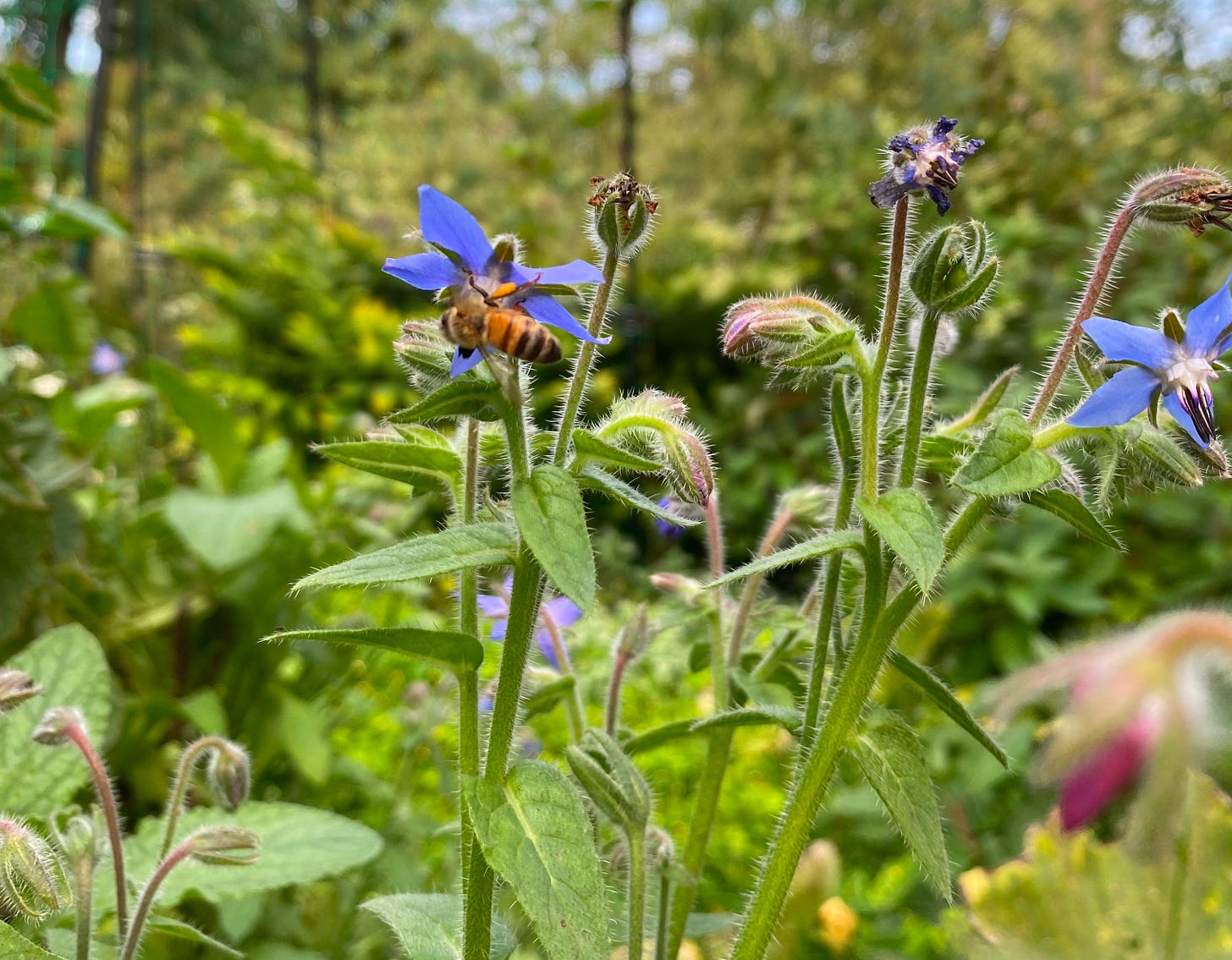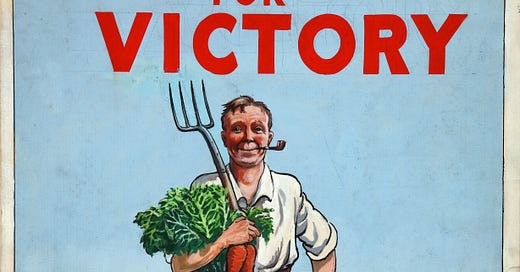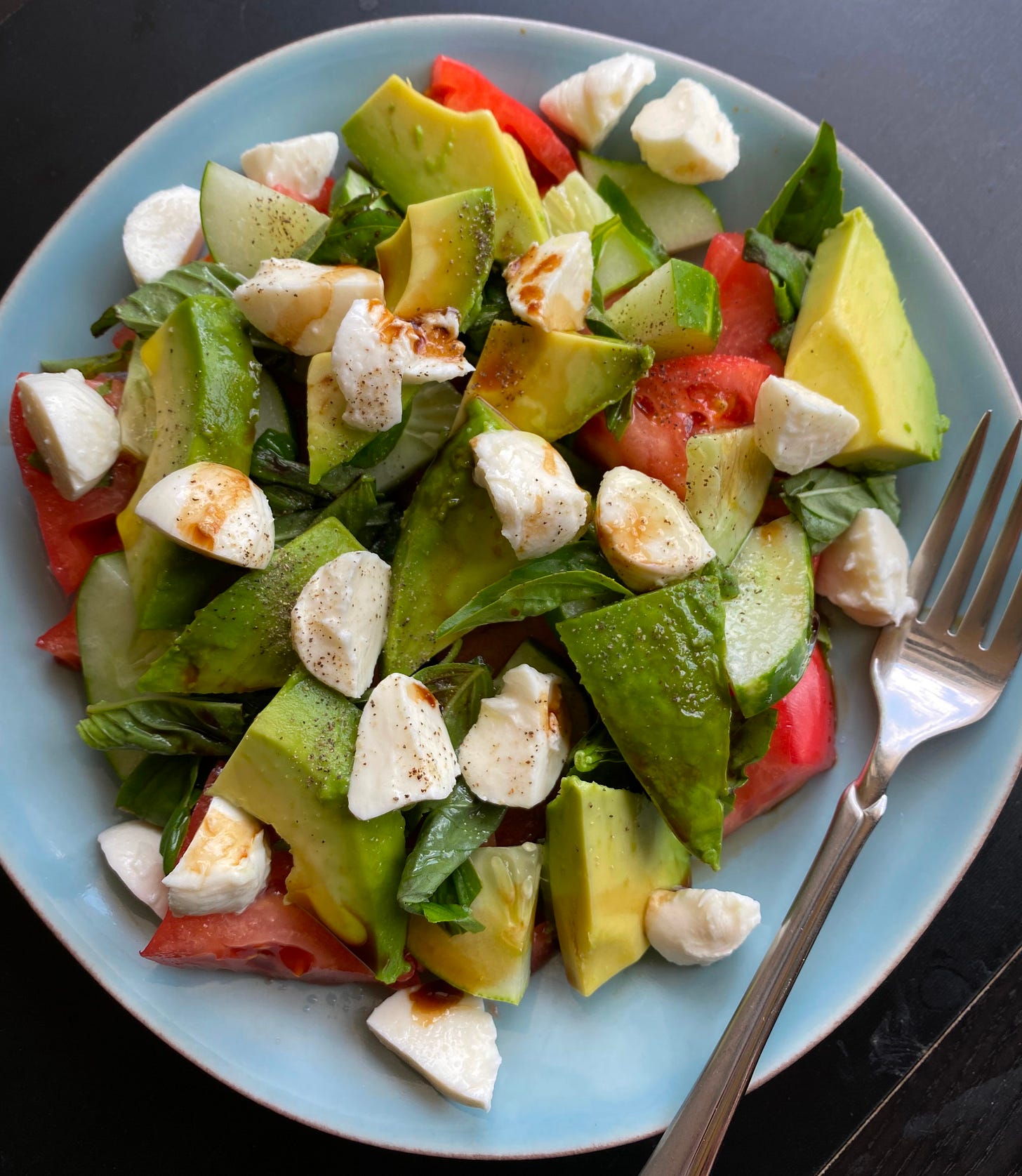I usually try to write posts that are half this length, if not shorter. But it turns out, after growing food for nearly 10 years, I have a lot to say. And although this is practically a novella, it just barely scratches the surface. There are so many things I didn’t cover. If you’re a life-long learner type, there’s really nothing better you can do than grow stuff. It will always surprise you.
Sometimes I think about victory gardens, and it blows my mind that there was a time when people all over this country came together to plant vegetable gardens in yards and public parks. It was even encouraged by the government! During World War II, about a third of all vegetables produced in the U.S. came from victory gardens. You guys, that’s bananas! Not only did it help supplement the agriculture industry as food production fell globally due to labor shortages, but it was also seen as a morale booster
The lesson? We are actually capable of doing things for the collective good in this country.
Also, when the going gets tough, plant a garden!
And, folks, the going is getting pretty darn tough here in the U.S. We’re coming apart at the seams; we have a shadow president who’s a Nazi, a regular president who’s a cartoon villain/aspiring evil monarch, a bear-murderer with a brain worm in charge of our health, people are losing jobs left and right, food is expensive as hell, and the climate crisis is going to make all of this so much worse.
So yeah, now’s a good time to plant a vegetable garden. Consider it a resistance garden.
As someone who’s been growing food in my yard for almost a decade, I’m going to talk about what I’ve thought about and planted over the years, and share some basic info for folks who might be new to it.
Getting started: Where to plant?
Before you plant anything, you’re going to want to determine where to plant. Most vegetables will want full sun, which means a minimum of six hours of direct sunlight a day. That said, many leafy greens (spinach, lettuce, kale, etc.) will be happy in partial shade. Some cool weather crops, like broccoli, peas, and carrots will also do fine in light shade, especially if your growing season gets hot, which is seemingly everywhere, these days. We’ve had some extremely hot springs in the Chicago area in recent years that stunted the growth of my broccoli and left my carrots bitter (pro tip: carrots are sweeter when they grow in colder weather, so spring and fall crops are best). Leafy greens and some herbs, like cilantro, will bolt (grow really fast and go to seed) in the heat, so keep that in mind, as well. Once they do that they’re usually not so tasty anymore (but the birds sometimes like to eat the seeds, so there’s that benefit).
If you have lots of options for growing spaces in your yard that are both sunny and shady, then you might want to figure out what you want to plant first, then site the garden. If you have limited options, then I recommend taking some time to figure out how much sunlight the site gets, and pick your crops accordingly.
Another thing to consider is moisture. Most crops like soil that’s not too wet, and not too dry. Got a low spot in the yard that floods when it rains? Don’t plant there. Got a higher spot in blazing full sun all day that dries out the second it stops raining? Not the ideal choice either. And speaking of water, you’ll need to water regularly, especially when your plants are young. If you can hook up a drip irrigation system, that’ll be the most efficient way to do it. That’s not really an option for me how my yard is set up, so I just do it the old fashioned way and spray my beds with the hose. Admittedly not best practices, but I’m lazy. Also, install rain barrels.
If you don’t have a yard, but you have a balcony or some other small outdoor space, there’s still lots of things you can grow in containers! I’ll get to that soon.
Should I use raised beds or not?
Well, that depends a lot on your soil. Most veggies like rich, loamy, well-drained soil. Root vegetables, especially, don’t grow well in soil that’s very compact and has a lot of clay or rocks. If you’re putting your bed in an area that has turf grass or other typical suburban landscaping features, there’s a good chance your soil just doesn’t have a lot of nutrients in it. Soil needs decaying organic matter to be healthy. So any area you’ve raked or, god forbid, blown your fall leaves away, or if you do a regular and thorough spring and/or fall cleanup, you’ve robbed your soil of the things it needs to nurture plants. In this case, you can either use a raised bed, or amend your soil with compost, worm castings, fish emulsion, and other things that will make it happy. Ideally not synthetic fertilizers, which can be a short-term fix, but over the long term are detrimental to soil health (and can pose human health and environmental risks).
Another thing to consider is contaminants. I grow almost exclusively in raised beds and containers because I live in an urban area (technically a suburb of Chicago, but I’m five blocks from the city limit. Really, we’re in an “urban village”). It means our soil (which I’ll admit, I’ve never had tested), is likely has contaminants like heavy metals, including lead. It’s not like we’re living on a superfund site, but urban areas have unhealthy stuff in the soil, just by way of development over the history of the place, traffic and exhaust, and other urban pollutants.
That said, don’t let it deter you from planting your garden. There are relatively easy ways to manage the risks. If you want to know a bit more, here’s a soil safety guide from Johns Hopkins University, and here’s a fact sheet from the EPA (you might want to download this baby asap, because, you know… our evil overlords). The tldr: it’s primarily surface contamination of vegetables you have to worry about, so there are quick fixes like peeling off outer leaves, peeling root veggies, and of course, washing really well. Also, wear gardening gloves to prevent soil to skin contamination. Your local Extension office probably has great resources on soil health and soil testing if you want to know more.
Less is known about how contamination in the plant tissues happens, but it seems the soil has to be pretty bad for significant accumulation to happen, and it tends to be the roots that are most affected. So if you’re really worried, don’t grow root veg in your garden (or grow those in a raised bed that’s deep enough the roots don’t reach the soil beneath, usually 12+ inches). Otherwise, amending the soil by creating a healthy top layer with compost and topsoil can go a long way to help avoid surface contamination.
Also, a note about raised beds - they’re not all equally safe. Certain materials, like industrially treated lumber, can leach harmful chemicals in the soil. So if you’re building your own, be mindful of your materials.
What should I grow?
Ah, the possibilities! First, just think about what you like. I love a Caprese salad and eat them all summer long, so I almost always grow tomatoes, cucumbers, and basil. My son loves watermelon, so I grow it sometimes, but it takes up a lot of space, and I’ve never had great luck with it. We’ve usually got green beans, snap peas, carrots, and butterhead lettuce. Sometimes potatoes or broccoli. I’ve got an asparagus patch that should be ready to harvest this year, finally (I’ll explain this in a bit), and a raspberry bush. I like to have some things that the kids can just pick and eat right there in the backyard. And I try to do a little pumpkin patch every year. Though that also takes up a lot of space and often gets ravaged by squash vine borer (more on pests in a minute), so it’s really just a labor of love. Yes, love of pumpkins. I’m a basic White lady that way, and I’m not ashamed. Though we only carve them. I don’t turn them into lattes.
Anyway, if you’re new to this, just plant what you like and you think will grow in the space you have with the sunlight you have. And don’t be afraid to experiment. The worst that can happen is it’ll die, and hopefully you’ll have learned something along the way for the next growing season.
As for how to best approach planting in the space you have, there are many different ways, but I’ve found the square-foot gardening method to be the easiest. You divide your bed up into 12 inch square sections, and then plant your crops within those, varying the number of plants based on their size. So, one broccoli plant per square foot, nine carrots, four garlics, etc. Here’s a quick, handy chart.
It’s always a good idea to incorporate some herbs and flowers into your gardens, too. Many are super beneficial when grown next to certain other plants. And this brings me to…
Companion planting and pest management!
Companion planting is the practice of growing specific plants together because of certain benefits. One of the most famous examples is the Three Sisters garden, the ages-old Indigenous practice of planting corn, beans, and squash all together. The corn offers support for the beans, which like to climb. Beans are nitrogen-fixers, meaning they add nitrogen to the soil, a crucial nutrient for all plants. And the squash acts as a ground cover, helping to shade the soil, keeping it cool and moist, and preventing weeds.
Other plant friends are: basil and tomatoes, carrots and chives, potatoes and beans. Sometimes the plant pairings are good because the combination improves the flavor or vigor of one or both plants. But often, the combinations are beneficial because they either attract pollinators or repel pests. Nasturtium, calendula, and marigolds play well with tons of other plants, and all work to help repel various pests. Companion planting is the only form of pest control I use in my garden. (Aside from squashing cabbage white caterpillars on my broccoli. Keep your eye out for these guys if you’re growing something in the cabbage family. If you see the white butterflies around, you can bet they’ve found your crops.)
The Farmer’s Almanac has a great companion planting guide to help you get started.
Don’t have a lot of space and need to grow some things in containers? No problem! There’s tons of stuff you can grow in containers, and you can even still companion plant. I’d say just make sure you have at least a 5 gallon container, depending on what you’re growing. Tomatoes and basil, peppers and eggplant are all good for containers. You can plant potatoes in a container! Green beans, too, just go for the bush bean variety; they’re small and compact instead of long and vining. You can grow blueberries or raspberries in a container. I even found a melon from Seed Savers Exchange that is small enough to grow in a container, which I’m going to try this year!
You really could grow yourself a decent kitchen garden just with a few containers, so don’t let not having a yard stop you.

Perennials vs. Annuals
Most of what you’ll grow will be annuals, meaning they’ll grow for one season and you’ll have to replant them next year if you want to grow them again. But it’s worth considering planting some perennials, meaning they’ll grow back year after year, often becoming more productive every year, which will cut back on labor. Once perennials are established, they’re usually quite hearty (and in fact, may start taking over your garden if you’re not careful).
Any of your berry bushes will be perennial, and can be quite aggressive if left unchecked. That said, if you have children who will eat a nine dollar pint of raspberries in a day, it’s not a bad thing to grow them in your own backyard. Blackberries, raspberries, and strawberries all self-pollinate, meaning you’ll only need one plant to produce a crop. Some blueberry varieties self-pollinate (like the northern highbush, which also happens to be native to North America) but produce greater yields if there’s another plant present to cross-pollinate with.
Another of my favorite crops that also happens to be a perennial is asparagus. If you plant asparagus, don’t harvest the stalks the first year; give them two or even three years to establish before harvesting your first crop. But then after that, you’ll have a patch that could last decades (and also, as I understand it, might take over a bit). Asparagus is the only vegetable that everyone in my family likes, so it was worth designating a little patch in my garden.
Compost and cover crops
Listen, there are some people out there who are all about living that compost life. Like, hardcore backyard composters. I’m not that. We have a municipal compost program, so most of our food scraps just go in our compost bin and get taken away by our waste hauler (and then those of us who participate in the program get access to free, finished compost in the spring). That said, I do have a compost tumbler bin which was actually left by the previous owner of our house. So I toss some scraps in there sometimes, and turn the bin, well, very infrequently. So, this is a case of do as I say, not as I do. Like I said, I’m lazy.
Anyway, compost is awesome for your soil, and food crops are very hungry for very nutrient heavy soil. So you’ll need to amend your soil every year with compost to keep it healthy. If you’ve got the space in your yard, it’s not a bad idea to have a compost pile. There are a million ways to do this and a ton of information online. Here’s a guide from the Rodale Institute to get you started.
Throwing food scraps in the garbage is just a really bad thing to do, and you should avoid it if you can. When food waste breaks down in a landfill, it produces methane. In fact, it’s the biggest source of methane emissions of any material in landfills. Organic material should go back to the earth, where it belongs. Since you’re gonna need something to keep your soil healthy when you’re growing food, you might as well make your own compost if you can.
One last thing, I’m a big fan of the chop and drop method of composting. Which is to say, if I’m harvesting something, I’ll let leaves and stems fall and just decay right into the soil. At the end of the season, I’ll spread a layer of compost over dead plant matter, and just let it all decay (if a plant had a disease like blight, or a pest infestation, don’t leave that matter in your soil). And you can plant cover crops, like winter rye, then chop off the growth in spring once it’s a few inches high and leave it in the beds to decay. Healthy soil is soil that’s full of dead stuff. So get creative and use it whenever you can.
Growing food in times of crisis
Lastly - a note about growing food in times of crisis to feed your family and neighbors, and/or make a significant dent in your grocery bill. Having the ingredients for a fresh caprese salad is nice and all, but it’s not going to be a significant source of calories when you need it. And if we’re growing for survival, that’s what we need.
Folks, potatoes are your best bet. There’s a reason my Irish ancestors survived, albeit meagerly, on these babies. I’m here because of potatoes. You’re not gonna be able to survive on potatoes alone, but they have all the qualities of a good survival food. They’re nutrient dense, high in calories, have a long shelf life, can be cooked in so many different ways, are adaptable to a variety of climates, and can produce a lot in a relatively small area. If you’re growing a survival garden, potatoes are an essential part (for a cool history of potatoes, aka “the people’s food” there’s a two-parter from the Cool People Who Did Cool Stuff podcast that’s worth a listen).
Other good survival foods to grow include beans (especially ones grown for drying), winter squash, root veggies, and I would add, kale (even though I don’t like it). If you’ve got room for a three sisters garden, awesome! Berries are also nice because they can be preserved and used over the winter when you’re gonna need vitamin C. Things that will last a long time after being harvested, can be canned or preserved, and provide a lot of nutrients and calories are the way to go. Lettuce isn’t your friend if you need to fill a hungry belly. Plus, you can eat dandelions, and they have way more nutrients than your romaines and butterheads anyway. So maybe don’t pull all the dandelions out of your gardens and lawns, while we’re at it.
In conclusion
So, in summary: grow a resistance garden!
Treat your land as family, become friends with your plants, feed yourself and your neighbors, and stick it - lovingly and in a collectively-minded way - to the evil overlords who want us scared and isolated. Gardens bring us together and make us happy.









This was enjoyable and motivational. A question: if you’re growing things that are up off the ground (such as beans, or a raspberry bush), is it a problem if a cat poops in your garden? I haven’t been successful in getting this one to stop, so I wonder if I should only grow flowers in those beds.
I wanted to try to grow a garden during pandemic funemployment but my climate is extremely challenging so I was intimidated and my housing was unstable so I didn’t want to invest in raised beds or a greenhouse at our rental so I found a workshare at a local organic farm. It’s been great and I even got paid last summer so just wanted to offer that up as an option.